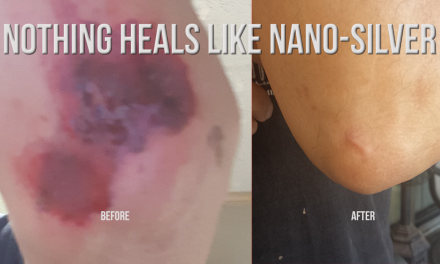Throughout history, there have always been addictive substances to tempt young and old to experience euphoria and escape the trials of life. Today, the flavor drug of the rich and poor alike is methamphetamine. On the street it’s known as meth, speed, ice, chalk, crank, fire, glass or crystal.
Most people don’t realize the devastating effects of this highly addictive drug. A person can become addicted immediately, even after the first use of the drug.
Not Your Typical Addict
In America alone, over 12 million people ages 12 and older have tried it and more than two million are using it habitually. Meth use is not bound to the people who live in the inner city. The drug has become popular in suburban communities across the U.S., colleges and of course, Hollywood as well. It’s rather inexpensive to make in clandestine laboratories with common over-the-counter additives.
Stephen Pasierb, president and CEO of The Partnership for a Drug-Free America, says, “Very few people understand the broad dangers methamphetamine poses to the public health of our communities in addition to meth users themselves.”
The high from meth can last as long 12 hours. The euphoria created by meth is a result of the release of dopamine, a neurotransmitter that stimulates brain cells and brings about a sensation of intense high and pleasure. The danger involves a cycle of having to increase the frequency and dosage of the drug to achieve this state of pleasure on an ongoing basis. With habitual use, there is permanent and irreversible brain damage, high blood pressure, heart problems, respiratory problems, advanced gum disease, rapid loss of teeth due to tooth decay and even death.
Other side effects include a period of stimulation involving twitching, jitteriness, increased focus and mental alertness, and eventually fatigue. After this stimulation period, there is an intense need for sleep. High doses and frequent use can result in anxiety and fear about the person’s well-being, prolonged depression, during which suicide is possible.
Crystal meth is reported to also attack the immune system, which means users are prone to infections, including MRSA. The effect on the immune system may be the result of lack of sleep or malnutrition as well.
No Matter How You Take It…
Methamphetamine is commonly smoked in glass pipes or heated in aluminum foil with a flame underneath. Users are also known to snort meth since it is a powerful decongestant. It is a fast way to clear nasal cavities. However, with chronic snorting, the nose cartilage may deteriorate. Even if it’s snorted, since there is a direct connection between the nasal passages and the mouth region, the teeth can still be severely damaged. Whether it’s snorted or smoked, due to the chemical acidity of the drug, the mouth becomes dry which causes tooth decay.
When taken orally, crystal meth shrinks the blood vessels, cutting the blood supply to the gum tissues. Over time, as the blood supply and oxygen to the tissues decrease, gum tissue dies.
Another method of meth use is through injection. Research reports injection users often do not experience severe tooth decay, because there is no residue left on the teeth as there is by taking it orally, versus through smoking or snorting it. However, other health risks can be potentially very serious, since injection can have a more powerful effect. Skin rashes referred to as speed bumps are common as are infections due to damage to the skin. Speed bumps are also used to describe small bumps on the tongue. Of course, using a common needle during injection without sterilization can transmit diseases such as HIV or hepatitis. Reports indicate approximately 60 percent of deaths related to methamphetamine is a result of shooting up crystal meth.
Depending on the region the methamphetamine was produced, the drug could be cut with ingredients such as lye, red phosphorus, muriatic and sulfonic acids. Others can be mixed with cold medicine, hydrogen peroxide, fertilizer, antifreeze, and even battery acid. These can introduce corrosive chemicals that leave a residue on the teeth, gums, and skin causing open sores and infections. If meth is smoked, these corrosive ingredients are vaporized and spread all over the tissues causing irritation and burning in the mouth.
Fast Track to Full Dentures
Not only does methamphetamine cause serious health problems to the body, but the damage on the oral cavity is specifically alarming. Known as meth mouth the effects can include:
- Severe dry mouth
- Grinding and clenching of the teeth
- Black stained and rotting of teeth that crumble and fall apart
- Sore, bleeding gums
Saliva is very important to maintaining the health of the mouth because it helps neutralize acids. With meth use, since saliva isn’t flowing, bacteria can easily build up faster and begin the break up of tooth structure.
Grinding and clenching can be so severe as to fracture and break the teeth. The pressure placed on the jaw by clenching and grinding can also result in severe headaches, neck pain, and jaw ache. It can become very painful to eat, as tooth abscesses develop in the mouth causing severe tooth pain. As the infection spreads, fever, nausea and just not feeling well due to mouth infections are often experienced.
Unfortunately, meth users have no sense of time, especially while under the influence, and therefore home oral hygiene becomes non-existent. On an average, most teeth can be lost within one to two years of starting regular meth use.
Because of extreme dry mouth with a feeling of cotton mouth many users constantly drink sugary sodas and eat excessive amounts of carbohydrates.
Tell-Tale Signs of a Meth User
There are many physical and psychological warning signs to detect a user; dilated pupil, weight loss, insomnia, loss of appetite, intense paranoia, hallucinations or delusions, sudden violent anger, and generalized rapid and severe tooth decay on most teeth.
Detox and Treatment
There is no safe level of meth use, but treatment and recovery are possible. As with most addictions, withdrawal symptoms are characterized by drug craving, depression, disturbed sleep and increased appetite. Prescription medications may be given to help with depression and sleep. Programs based on a 12-step model are also offered. For treatment of the mouth, usually, full mouth reconstruction including full dentures may be the only course of treatment.
Early detection and treatment of the mouth is the only way to help save the teeth of a meth user.
The high felt during the period of euphoria can eventually result in the user falling very low and eventually into an early grave. If you know someone who is a crystal meth user, help him or her get checked into a drug rehabilitation facility as soon as possible.











